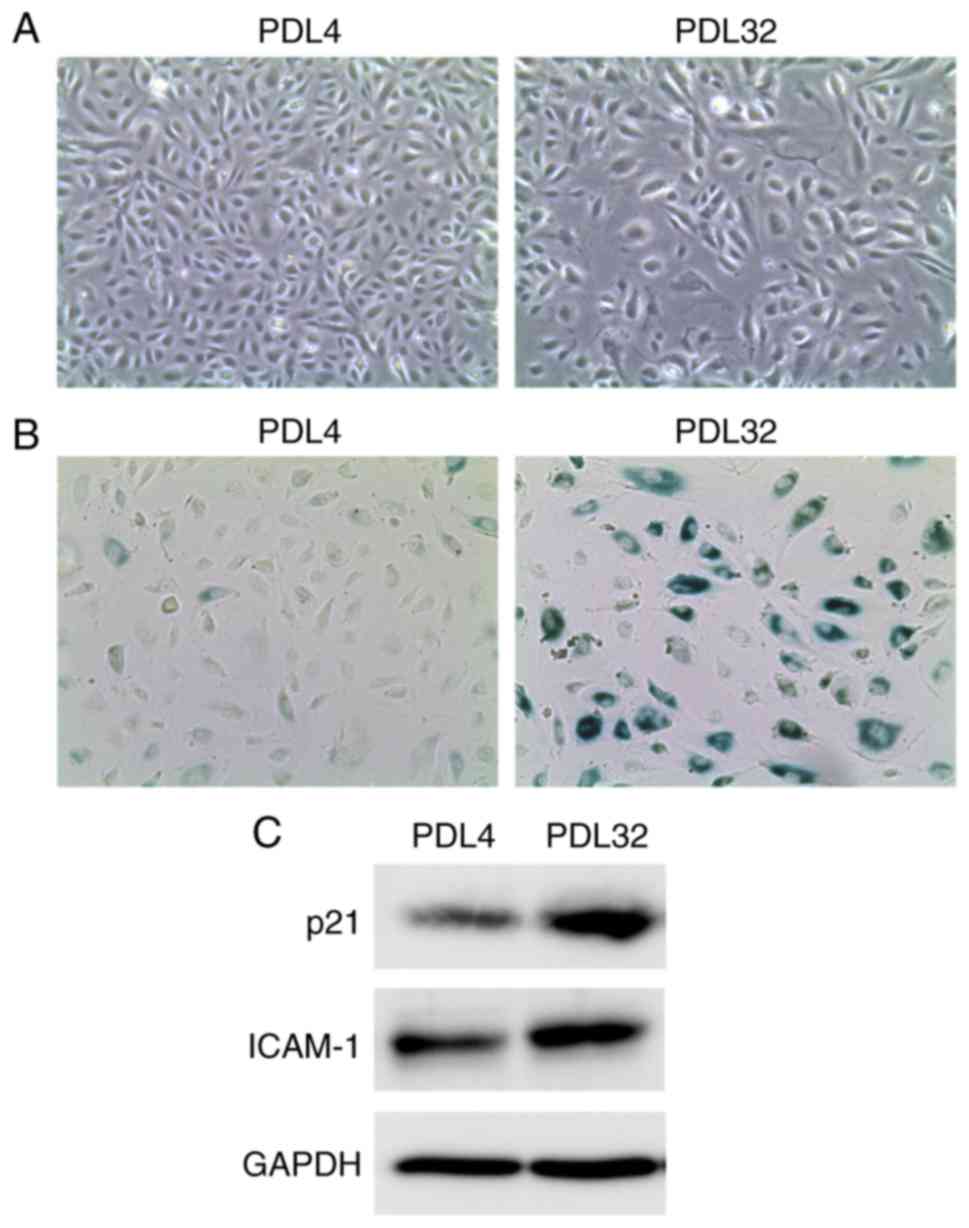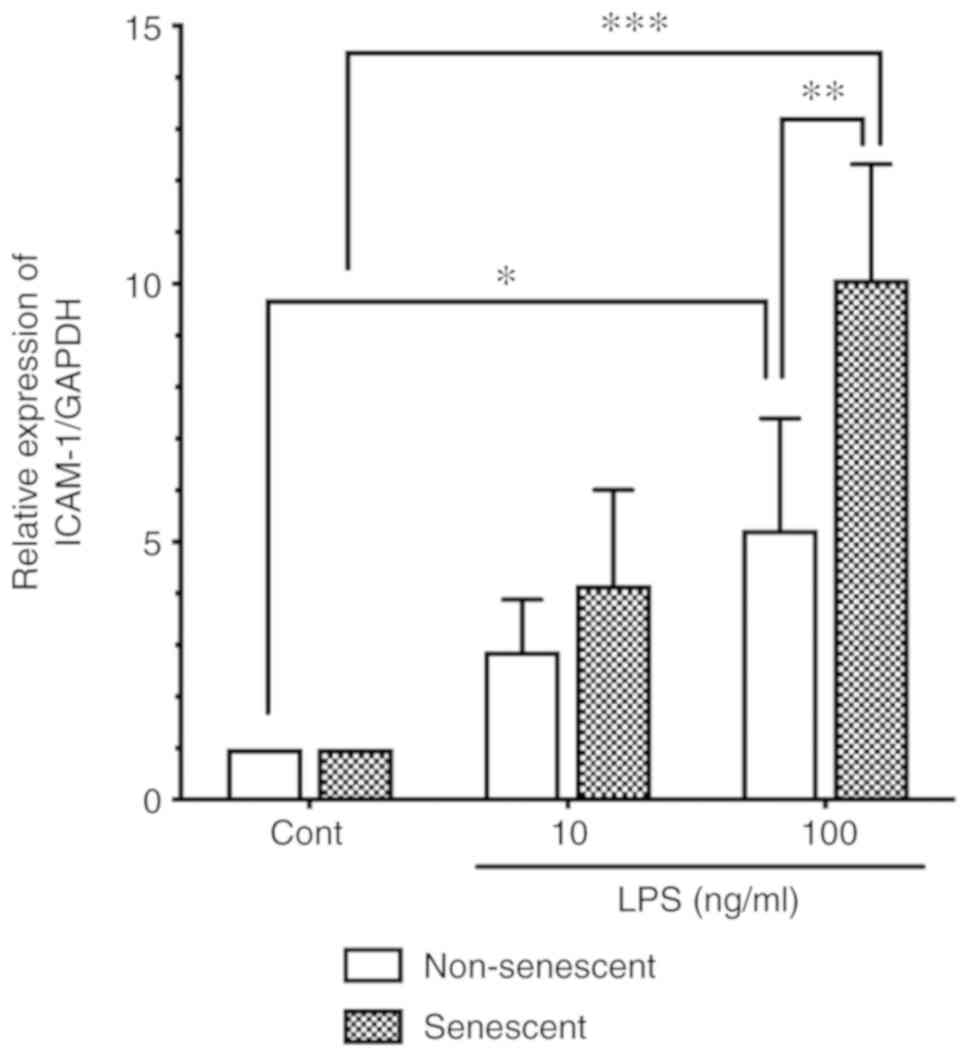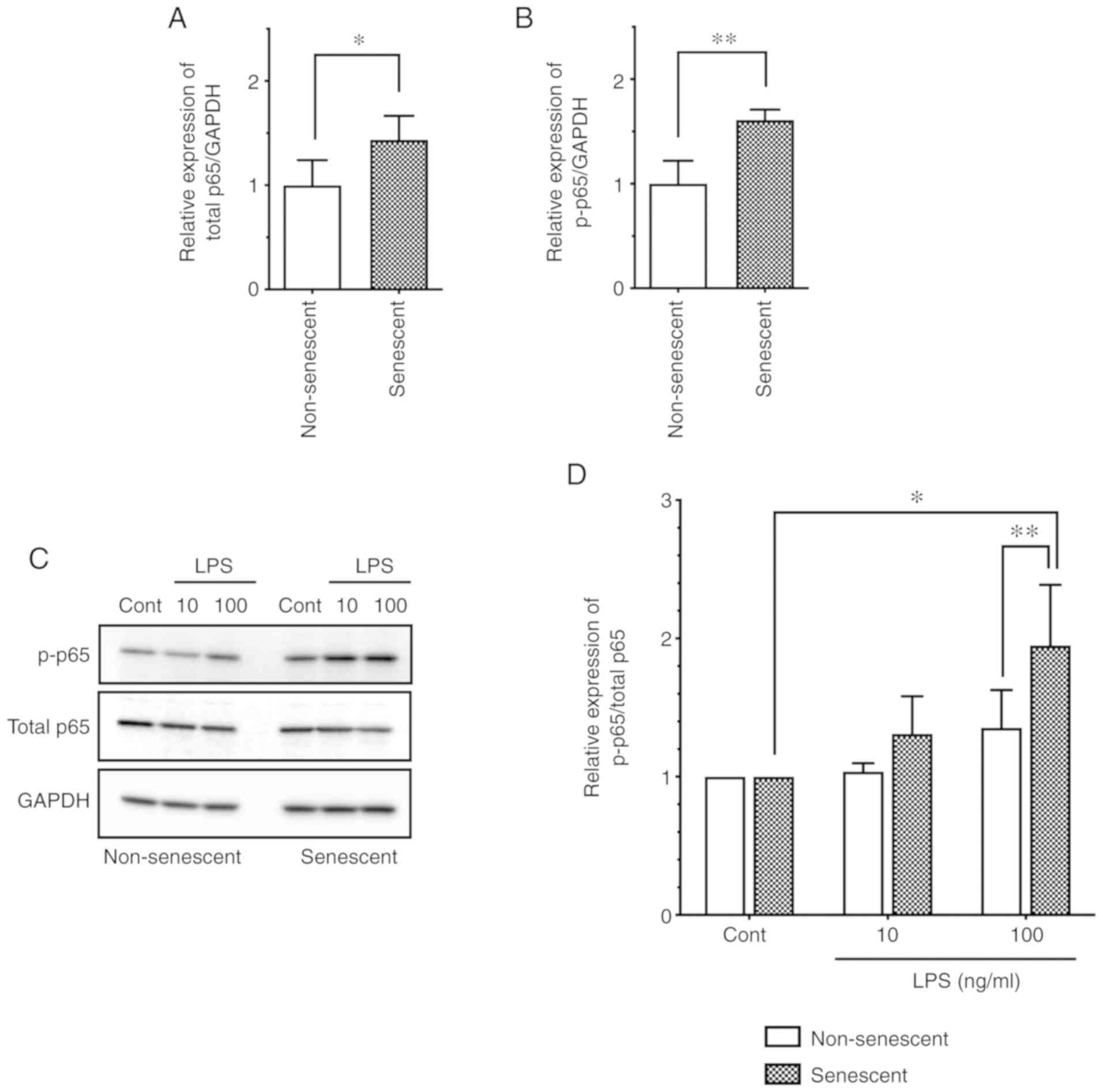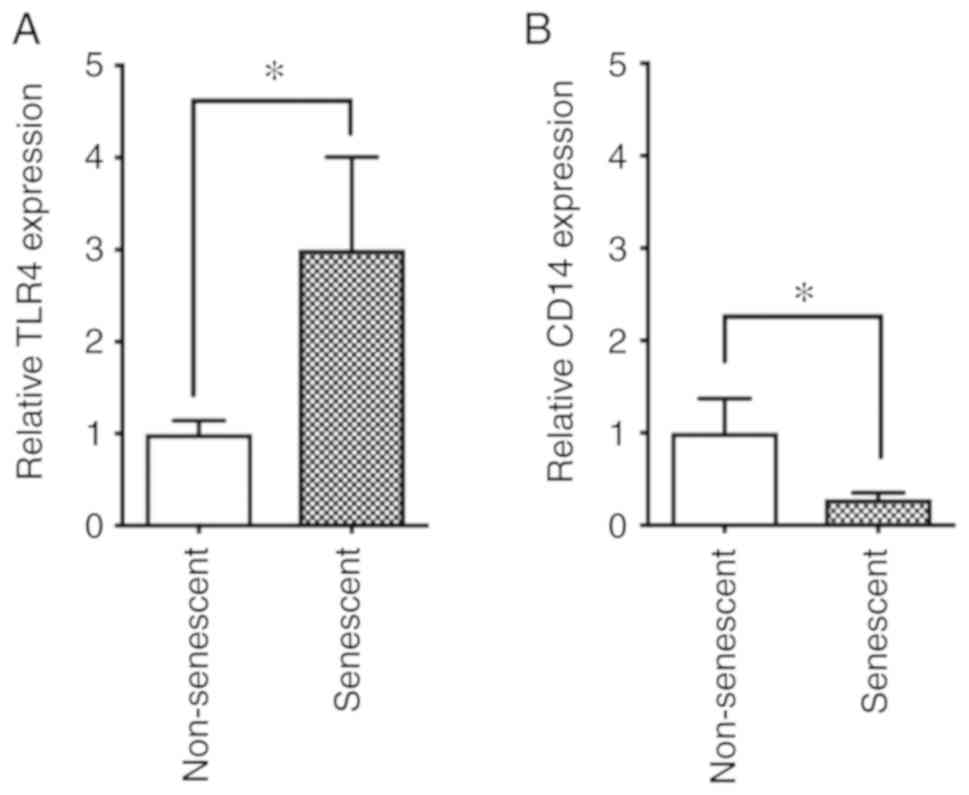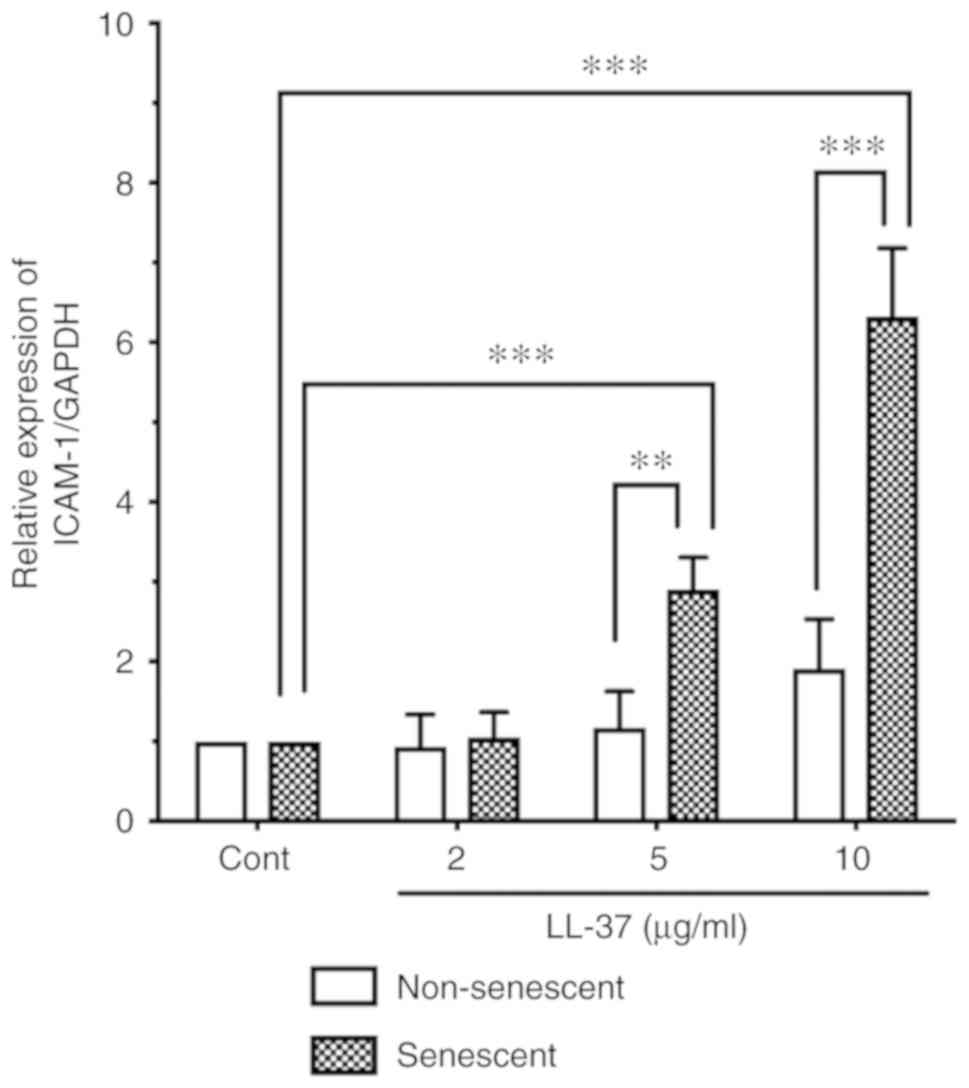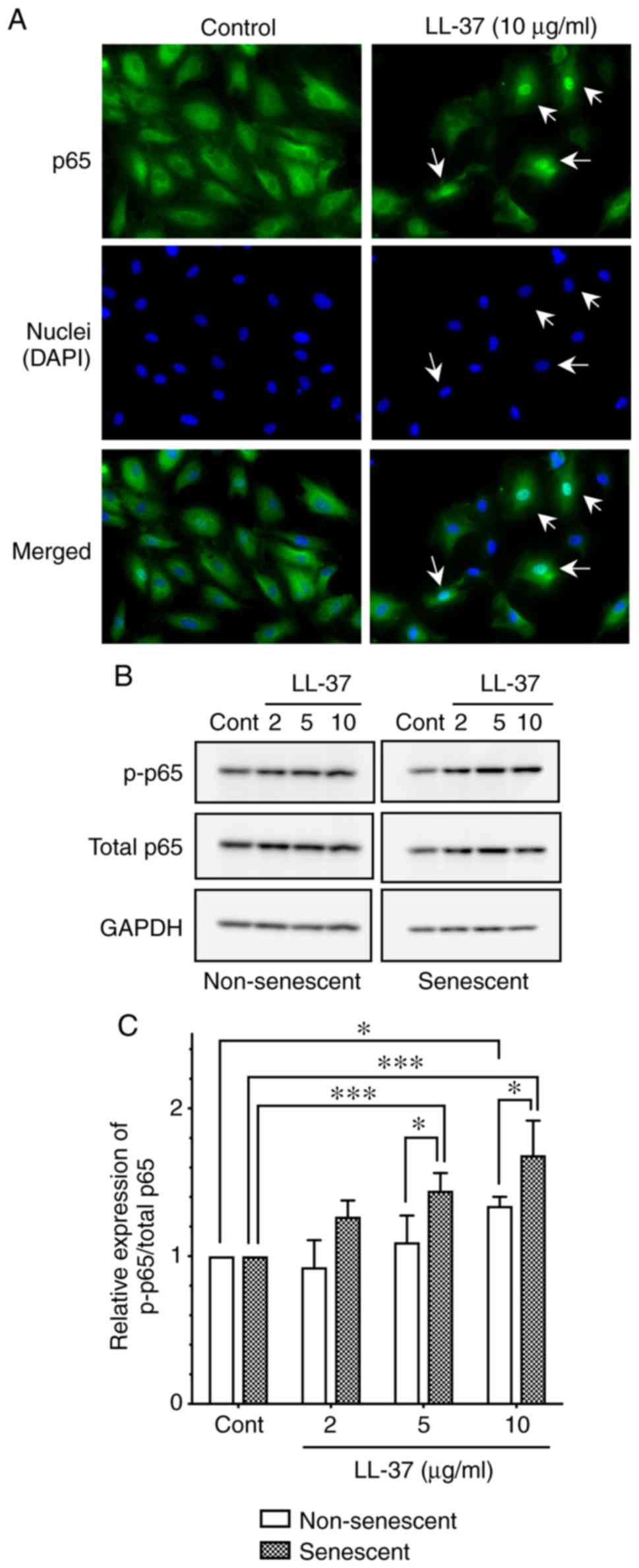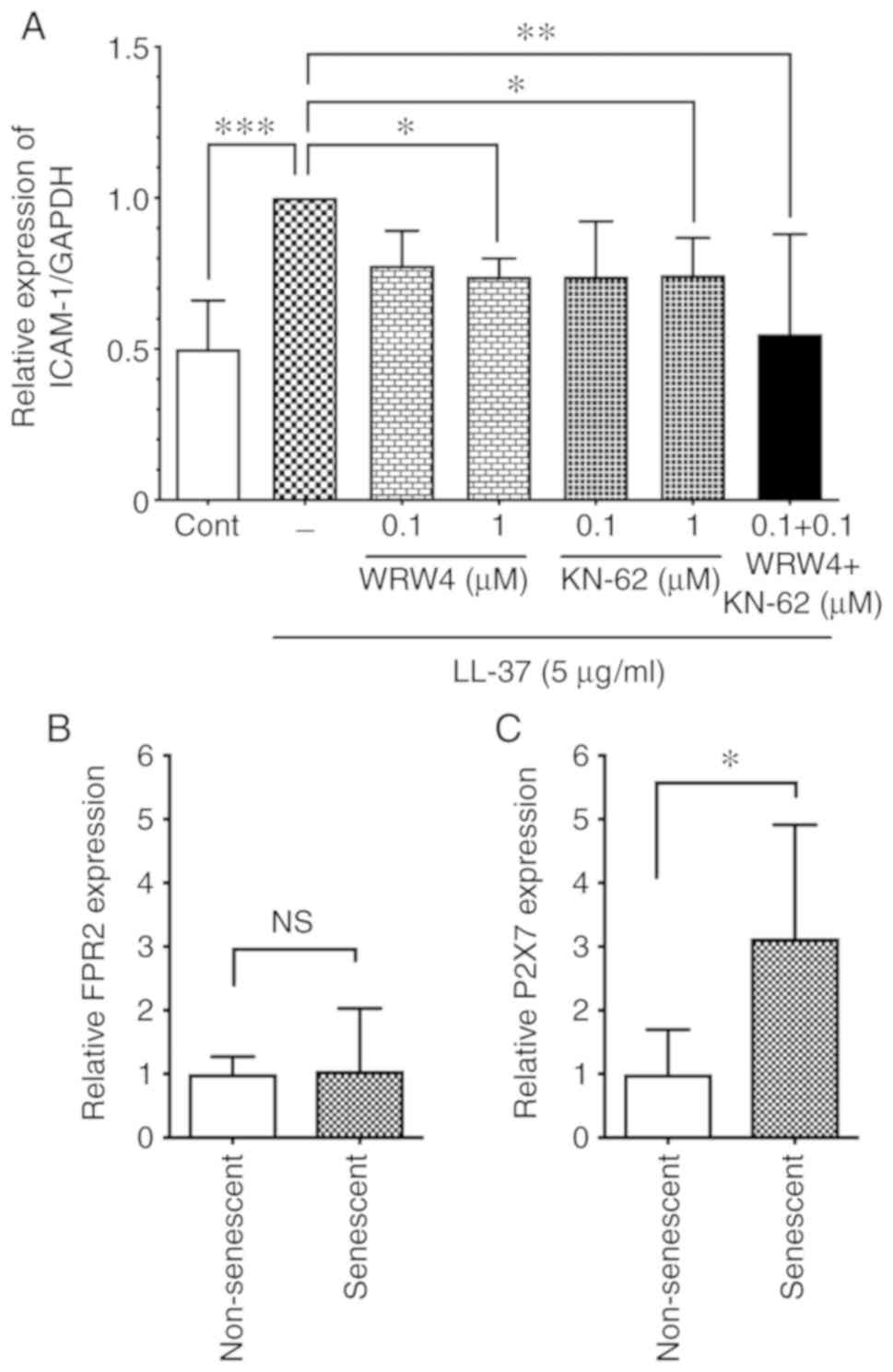|
1
|
Hayflick L: The limited in vitro lifetime
of human diploid cell strains. Exp Cell Res. 37:614–636. 1965.
View Article : Google Scholar : PubMed/NCBI
|
|
2
|
Coppé JP, Desprez PY, Krtolica A and
Campisi J: The senescence-associated secretory phenotype: The dark
side of tumor suppression. Annu Rev Pathol. 5:99–118. 2010.
View Article : Google Scholar : PubMed/NCBI
|
|
3
|
Campisi J and d'Adda di Fagagna F:
Cellular senescence: When bad things happen to good cells. Nat Rev
Mol Cell Biol. 8:729–740. 2007. View
Article : Google Scholar : PubMed/NCBI
|
|
4
|
Childs BG, Durik M, Baker DJ and van
Deursen JM: Cellular senescence in aging and age-related disease:
From mechanisms to therapy. Nat Med. 21:1424–1435. 2015. View Article : Google Scholar : PubMed/NCBI
|
|
5
|
Minamino T, Miyauchi H, Yoshida T, Ishida
Y, Yoshida H and Komuro I: Endothelial cell senescence in human
atherosclerosis: Role of telomere in endothelial dysfunction.
Circulation. 105:1541–1544. 2002. View Article : Google Scholar : PubMed/NCBI
|
|
6
|
Aimetti M, Romano F and Nessi F:
Microbiologic analysis of periodontal pockets and carotid
atheromatous plaques in advanced chronic periodontitis patients. J
Periodontol. 78:1718–1723. 2007. View Article : Google Scholar : PubMed/NCBI
|
|
7
|
Pussinen PJ, Tuomisto K, Jousilahti P,
Havulinna AS, Sundvall J and Salomaa V: Endotoxemia, immune
response to periodontal pathogens, and systemic inflammation
associate with incident cardiovascular disease events. Arterioscler
Thromb Vasc Biol. 27:1433–1439. 2007. View Article : Google Scholar : PubMed/NCBI
|
|
8
|
Edfeldt K, Swedenborg J, Hansson GK and
Yan ZQ: Expression of toll-like receptors in human atherosclerotic
lesions: A possible pathway for plaque activation. Circulation.
105:1158–1161. 2002. View Article : Google Scholar : PubMed/NCBI
|
|
9
|
Nagaoka I, Hirata M, Sugimoto K,
Tsutsumi-Ishii Y, Someya A, Saionji K and Igari J: Evaluation of
the expression of human CAP18 gene during neutrophil maturation in
the bone marrow. J Leukoc Biol. 64:845–852. 1998. View Article : Google Scholar : PubMed/NCBI
|
|
10
|
Travis SM, Anderson NN, Forsyth WR,
Espiritu C, Conway BD, Greenberg EP, McCray PB Jr, Lehrer RI, Welsh
MJ and Tack BF: Bactericidal activity of mammalian
cathelicidin-derived peptides. Infect Immun. 68:2748–2755. 2000.
View Article : Google Scholar : PubMed/NCBI
|
|
11
|
Choi KY, Chow LNY and Mookherjee N:
Cationic host defence peptides: Multifaceted role in immune
modulation and inflammation. J Innate Immun. 4:361–370.
2012.PubMed/NCBI
|
|
12
|
Koczulla R, von Degenfeld G, Kupatt C,
Krotz F, Zahler S, Gloe T, Issbrücker K, Unterberger P, Zaiou M,
Lebherz C, et al: An angiogenic role for the human peptide
antibiotic LL-37/hCAP-18. J Clin Invest. 111:1665–1672. 2003.
View Article : Google Scholar : PubMed/NCBI
|
|
13
|
Byfield FJ, Wen Q, Leszczynska K,
Kulakowska A, Namiot Z, Janmey PA and Bucki R: Cathelicidin LL-37
peptide regulates endothelial cell stiffness and endothelial
barrier permeability. Am J Physiol Cell Physiol. 300:C105–C112.
2011. View Article : Google Scholar :
|
|
14
|
Edfeldt K, Agerberth B, Rottenberg ME,
Gudmundsson GH, Wang XB, Mandal K, Xu Q and Yan ZQ: Involvement of
the antimicrobial peptide LL-37 in human atherosclerosis.
Arterioscler Thromb Vasc Biol. 26:1551–1557. 2006. View Article : Google Scholar : PubMed/NCBI
|
|
15
|
Doering Y, Drechsler M, Wantha S,
Kemmerich K, Lievens D, Vijayan S, Gallo RL, Weber C and Soehnlein
O: Lack of neutrophil-derived CRAMP reduces atherosclerosis in
mice. Circ Res. 110:1052–1056. 2012. View Article : Google Scholar
|
|
16
|
Wantha S, Alard JE, Megens RT, van der
Döes AM, Döring Y, Drechsler M, Pham CT, Wang MW, Wang JM, Gallo
RL, et al: Neutrophil-derived cathelicidin promotes adhesion of
classical monocytes. Circ Res. 112:792–801. 2013. View Article : Google Scholar : PubMed/NCBI
|
|
17
|
Mihailovic PM, Lio WM, Yano J, Zhao X,
Zhou J, Chyu KY, Shah PK, Cercek B and Dimayuga PC: The
cathelicidin protein CRAMP is a potential atherosclerosis
self-antigen in ApoE(−/−) mice. PLoS One. 12:e01874322017.
View Article : Google Scholar
|
|
18
|
Chien Y, Scuoppo C, Wang X, Fang X,
Balgley B, Bolden JE, Premsrirut P, Luo W, Chicas A, Lee CS, et al:
Control of the senescence-associated secretory phenotype by NF-κB
promotes senescence and enhances chemosensitivity. Genes Dev.
25:2125–2136. 2011. View Article : Google Scholar : PubMed/NCBI
|
|
19
|
Nagaoka I, Hirota S, Niyonsaba F, Hirata
M, Adachi Y, Tamura H and Heumann D: Cathelicidin family of
antibacterial peptides CAP18 and CAP11 inhibit the expression of
TNF-alpha by blocking the binding of LPS to CD14(+) cells. J
Immunol. 167:3329–3338. 2001. View Article : Google Scholar : PubMed/NCBI
|
|
20
|
Yanaka M, Honma T, Sato K, Shinohara N,
Ito J, Tanaka Y, Tsuduki T and Ikeda I: Increased monocytic
adhesion by senescence in human umbilical vein endothelial cells.
Biosci Biotechnol Biochem. 75:1098–1103. 2011. View Article : Google Scholar : PubMed/NCBI
|
|
21
|
Dauphinee SM and Karsan A:
Lipopolysaccharide signaling in endothelial cells. Lab Invest.
86:9–22. 2006. View Article : Google Scholar
|
|
22
|
Renshaw M, Rockwell J, Engleman C, Gewirtz
A, Katz J and Sambhara S: Cutting edge: Impaired Toll-like receptor
expression and function in aging. J Immunol. 169:4697–4701. 2002.
View Article : Google Scholar : PubMed/NCBI
|
|
23
|
Qian F, Wang X, Zhang L, Chen S, Piecychna
M, Allore H, Bockenstedt L, Malawista S, Bucala R, Shaw AC, et al:
Age-associated elevation in TLR5 leads to increased inflammatory
responses in the elderly. Aging Cell. 11:104–110. 2012. View Article : Google Scholar :
|
|
24
|
Berkestedt I, Nelson A and Bodelsson M:
Endogenous antimicrobial peptide LL-37 induces human
vasodilatation. Br J Anaesth. 100:803–809. 2008. View Article : Google Scholar : PubMed/NCBI
|
|
25
|
Nagaoka I, Tamura H and Hirata M: An
antimicrobial cathelicidin peptide, human CAP18/LL-37, suppresses
neutrophil apoptosis via the activation of formyl-peptide
receptor-like 1 and P2X7. J Immunol. 176:3044–3052. 2006.
View Article : Google Scholar : PubMed/NCBI
|
|
26
|
Khan SY, Awad EM, Oszwald A, Mayr M, Yin
X, Waltenberger B, Stuppner H, Lipovac M, Uhrin P and Breuss JM:
Premature senescence of endothelial cells upon chronic exposure to
TNFα can be prevented by N-acetyl cysteine and plumericin. Sci Rep.
7:395012017. View Article : Google Scholar
|
|
27
|
Tilstra JS, Clauson CL, Niedernhofer LJ
and Robbins PD: NF-κB in aging and disease. Aging Dis. 2:449–465.
2011.
|
|
28
|
Ogura N, Matsuda U, Tanaka F, Shibata Y,
Takiguchi H and Abiko Y: In vitro senescence enhances IL-6
production in human gingival fibroblasts induced by
lipopolysaccharide from Campylobacter rectus. Mech Ageing Dev.
87:47–59. 1996. View Article : Google Scholar : PubMed/NCBI
|
|
29
|
Mochizuki K, Yamaguchi M and Abiko Y:
Enhancement of LPS-stimulated plasminogen activator production in
aged gingival fibroblasts. J Periodontal Res. 34:251–260. 1999.
View Article : Google Scholar : PubMed/NCBI
|
|
30
|
Michelsen KS, Wong MH, Shah PK, Zhang W,
Yano J, Doherty TM, Akira S, Rajavashisth TB and Arditi M: Lack of
Toll-like receptor 4 or myeloid differentiation factor 88 reduces
atherosclerosis and alters plaque phenotype in mice deficient in
apolipoprotein E. Proc Natl Acad Sci USA. 101:10679–10684. 2004.
View Article : Google Scholar : PubMed/NCBI
|
|
31
|
Lloyd-Jones KL, Kelly MM and Kubes P:
Varying importance of soluble and membrane CD14 in endothelial
detection of lipopoly-saccharide. J Immunol. 181:1446–1453. 2008.
View Article : Google Scholar : PubMed/NCBI
|
|
32
|
Wang L, Wang J, Fang J, Zhou H, Liu X and
Su SB: High glucose induces and activates Toll-like receptor 4 in
endothelial cells of diabetic retinopathy. Diabetol Metab Syndr.
7:892015. View Article : Google Scholar : PubMed/NCBI
|
|
33
|
Nagyoszi P, Wilhelm I, Farkas AE, Fazakas
C, Dung NT, Haskó J and Krizbai IA: Expression and regulation of
toll-like receptors in cerebral endothelial cells. Neurochem Int.
57:556–564. 2010. View Article : Google Scholar : PubMed/NCBI
|
|
34
|
Borel N, Pospischil A, Dowling RD, Dumrese
C, Gaydos CA, Bunk S, Hermann C, Ramirez JA and Summersgill JT:
Antigens of persistent Chlamydia pneumoniae within coronary
atheroma from patients undergoing heart transplantation. J Clin
Pathol. 65:171–177. 2012. View Article : Google Scholar
|
|
35
|
Tsutsumi-Ishii Y, Shimada K, Daida H,
Toman R and Nagaoka I: Low potency of Chlamydophila LPS to activate
human mononuclear cells due to its reduced affinities for CD14 and
LPS-binding protein. Int Immunol. 20:199–208. 2008. View Article : Google Scholar
|
|
36
|
An N, Andrukhov O, Tang Y, Falkensammer F,
Bantleon HP, Ouyang X and Rausch-Fan X: Effect of nicotine and
Porphyromonas gingivalis lipopolysaccharide on endothelial cells in
vitro. PLoS One. 9:e969422014. View Article : Google Scholar : PubMed/NCBI
|
|
37
|
Carnevale R, Nocella C, Petrozza V,
Cammisotto V, Pacini L, Sorrentino V, Martinelli O, Irace L,
Sciarretta S, Frati G, et al: Localization of lipopolysaccharide
from Escherichia coli into human atherosclerotic plaque. Sci Rep.
8:35982018. View Article : Google Scholar : PubMed/NCBI
|
|
38
|
Agier J, Efenberger M and
Brzezińska-Blaszczyk E: Cathelicidin impact on inflammatory cells.
Cent Eur J Immunol. 40:225–235. 2015. View Article : Google Scholar : PubMed/NCBI
|
|
39
|
Green JP, Souilhol C, Xanthis I,
Martinez-Campesino L, Bowden NP, Evans PC and Wilson HL:
Atheroprone flow activates inflammation via endothelial
ATP-dependent P2X7-p38 signalling. Cardiovasc Res. 114:324–335.
2018. View Article : Google Scholar :
|
|
40
|
Larrick JW, Hirata M, Balint RF, Lee J,
Zhong J and Wright SC: Human CAP18: A novel antimicrobial
lipopolysaccha-ride-binding protein. Infect Immun. 63:1291–1297.
1995.PubMed/NCBI
|
|
41
|
Hu Z, Murakami T, Suzuki K, Tamura H,
Kuwahara-Arai K, Iba T and Nagaoka I: Antimicrobial cathelicidin
peptide LL-37 inhibits the LPS/ATP-induced pyroptosis of
macrophages by dual mechanism. PLoS One. 9:e857652014. View Article : Google Scholar : PubMed/NCBI
|
|
42
|
Suzuki K, Murakami T, Kuwahara-Arai K,
Tamura H, Hiramatsu K and Nagaoka I: Human anti-microbial
cathelicidin peptide LL-37 suppresses the LPS-induced apoptosis of
endothelial cells. Int Immunol. 23:185–193. 2011. View Article : Google Scholar : PubMed/NCBI
|















